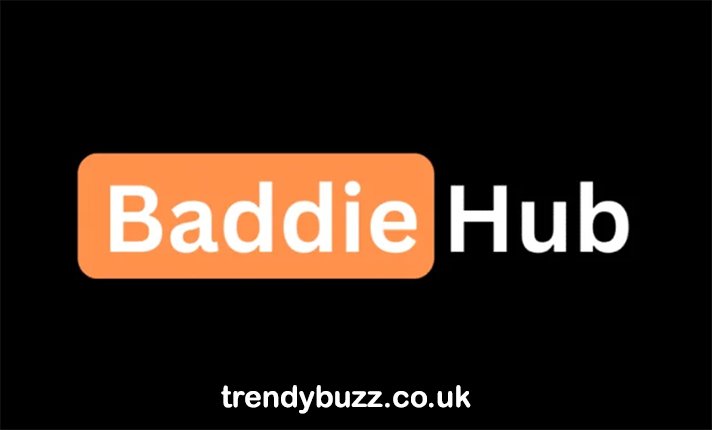Introduction
BaddieHub is more than a catchy name; it describes an online phenomenon that blends a confident aesthetic with commerce and community. Born from social media’s “baddie” persona—think bold makeup, curated outfits, and unapologetic self-expression—BaddieHub is a hub for fashion inspiration, beauty tutorials, influencer-led shopping, and cultural conversation. Platforms and sites using the BaddieHub name position themselves as destinations where young consumers find looks, learn trends, and discover products recommended by creators they follow.
How BaddieHub Grew: From Meme to Market
The “baddie” look has roots in Instagram and TikTok culture: dramatic lashes, sharp contouring, statement hair, and outfits that walk the line between streetwear and glam. As creators packaged this aesthetic into repeatable content—tutorials, shop-the-look lists, and short-form videos—search traffic and commerce followed. Entrepreneurs and publishers turned the trend into platforms and storefronts: blogs, apps, and curated marketplaces that promise a one-stop experience for anyone chasing the vibe. The result is a clear path from discovery to purchase that didn’t exist a decade ago.
What You’ll Find on BaddieHub Sites
Most BaddieHub-style sites share common features: trend roundups, influencer spotlights, step-by-step beauty guides, and direct links to buy clothes and accessories. Many combine editorial content with affiliate commerce—articles and reels meant to inspire and convert. For users, the appeal is convenience: a single place to copy a look, discover new creators, and read fit notes before hitting “buy.” For brands, these channels are efficient pathways to trend-sensitive audiences who respond to visual proof and peer recommendations.
Why It Matters: Culture Meets Commerce
Two forces make BaddieHub influential. First, culture: the baddie aesthetic is a form of identity that signals confidence, individuality, and social currency. Second, commerce: the content-to-purchase loop on social platforms is tighter than ever, and BaddieHub-style properties act as bridges between aspiration and transaction. This combination changes how trends spread—viral videos can create stock shortages, and aggregated hubs accelerate discovery by collecting the best of short-form content in one place.
The Community Side: Support, Critique, and Remix
BaddieHub isn’t a monolith. It’s a collection of creators and audiences who remix the core elements to fit different bodies, identities, and price points. Some iterations emphasize empowerment and body positivity; others focus on premium brands or hyper-sexualized imagery. The most resilient communities offer practical value—how-tos, honest reviews, and multiple body-type photos—while preserving the aspirational edge that drew users in. Responsible hubs also surface creator credits and original posts, which builds trust and protects intellectual property.
Risks and Questions: Safety, Copyright, and Commercialization
Fast-moving niches bring challenges. Aggregators must manage copyright and proper attribution; creators and readers must be wary of undisclosed sponsorships. Platforms also need moderation strategies to handle explicit content and to protect younger audiences. Finally, heavy commercialization can dilute authenticity: users quickly spot when recommendations are driven by commissions rather than genuine preference. The healthiest BaddieHub projects balance viral energy with transparent affiliate practices and clear community standards.
How Creators and Brands Can Use BaddieHub
Creators should treat BaddieHub channels as ecosystems: build signature looks, document step-by-step processes, and offer honest fit notes. Brands should invest in discoverability—optimized short-form video, searchable editorial content, and frictionless checkout from inspiration pages. Both creators and brands win when content teaches: tutorials, size guides, and diverse imagery convert better than aspirational-only posts. Trust is the currency here authenticity outperforms glossy but hollow promotion.
Case Studies: Real-World Examples
Several sites and creators have already proven the model. Independent bloggers who started with simple makeup tutorials now run small businesses through affiliate links and membership tiers. On the retail side, fast-fashion labels and independent designers see measurable sales spikes when a BaddieHub post goes viral; the right placement can generate short-term demand within 24 to 72 hours. One notable pattern: creators who pair honest fit notes and multiple body-type photos tend to keep customers longer and face fewer returns. Those creator-to-commerce loops are the core business case for any BaddieHub operator.
Design and UX Considerations
If you’re building or redesigning a BaddieHub-style site, prioritize mobile-first design, fast-loading imagery, and clear product metadata. Users expect to move from inspiration to checkout in a few taps. Accessibility matters: readable fonts, good contrast, and alt text for images expand reach and reduce legal risk. Finally, provide creator attribution and links to original posts—this respects creators and increases trust among users who value provenance.
Final Thought
BaddieHub captures a moment where aspiration and accessibility meet. It gives people tools to experiment with identity, helps creators monetize cultural labor, and offers brands efficient discovery channels. The future will reward hubs that center respect, transparency, and creativity over optics alone. If you approach BaddieHub as a creative ecosystem instead of a quick marketing hack, it becomes a place where style and substance grow together.
